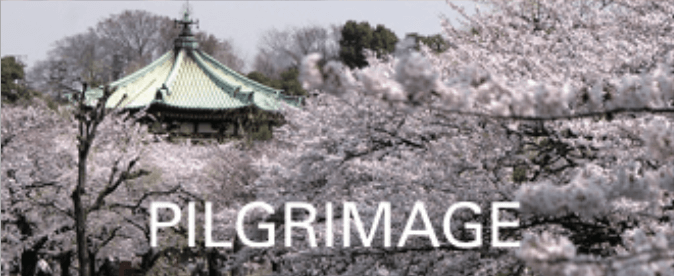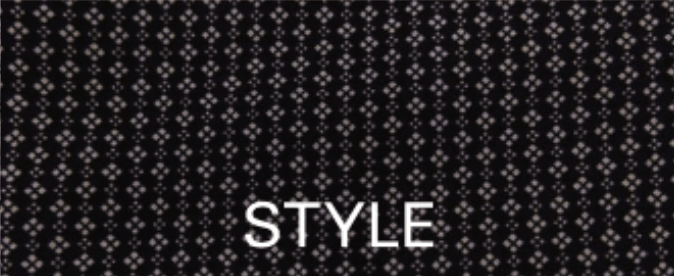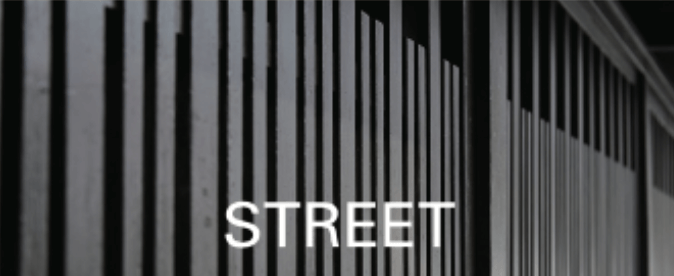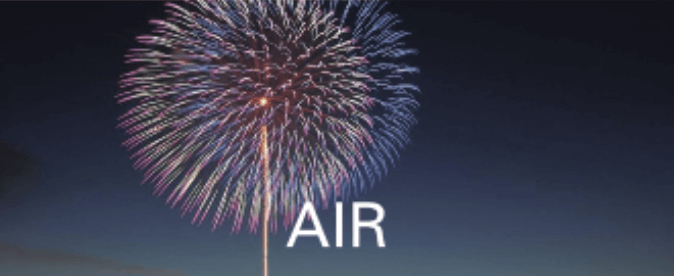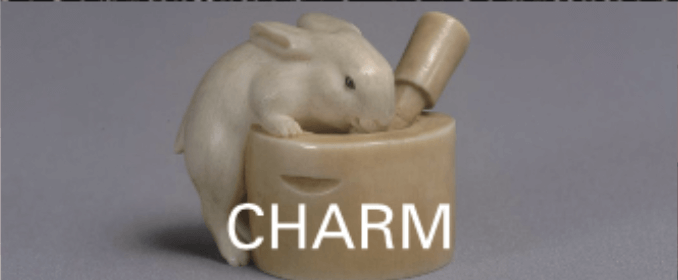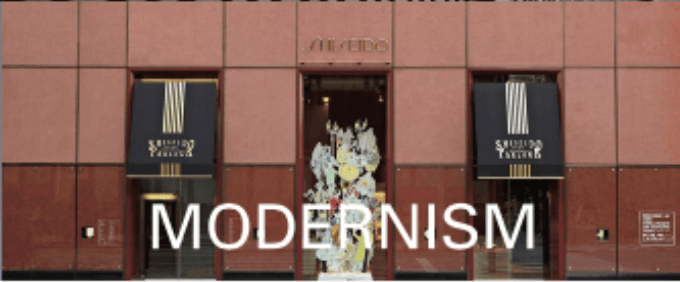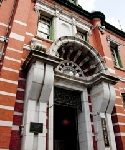
This museum is a comprehensive cultural facility that introduces well the history and culture of Kyoto. You can understand Honmamon, Genuine, in Kyoto. In addition to the various special exhibitions on the 4th floor, in the general exhibition rooms on the 2nd and 3rd floors, the museum introduces the best works related to Kyoto. In the comfortable environment of the 3rd floor film theater, masterpiece movies possessed by Kyoto Prefecture run in sequence on the screen.
And this museum is full of highlights, such as the annex (formerly the Bank of Japan, Kyoto Branch), whose modern Western-style building has been designated as an important cultural property. And the shops reproduce the townscape of latticed storefronts of Kyoto.
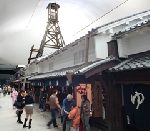
The museum’s diorama is excellent, which reproduces and displays the city of Osaka from the late Edo period (1603 – 1868) to the post World War II period. It is a full-scale reproduction of store shelves in the front of the bookstores and the publisher-store in the Edo period. New books, used books, and Ukiyoe, Japanese woodblock prints, are lined up, where you can understand the business situation at that time.
The museum also possesses valuable paintings in the Osaka painting circle, such as the paintings by Nakai Ranko (1766 – 1830), a Japanese painter who participated in the salon of writers and artists. Nakai learned the tea ceremony, studied poetry under Nakai Chikuzan (1730 – 1804), a Confucian scholar, and interacted with Kimura Kenkado (1736 – 1802), a Japanese scholar artist and art connoisseur.

This museum is located on the Osaka Shoin Women’s University Kosaka Campus.
Tanabe Seiko (1928 – 2019), a Japanese author, was a graduate of the predecessor Shoin Women’s College of this university. It Opened in 2007 as part of the 90th anniversary of the university. There is a literary wall with more than 260 of her book covers and magazines. The museum exhibits handwritten manuscripts edited by Tanabe when she was a student, the Akutagawa Prize (a clock) – a Japanese popular literary award, which was established in 1935 by Kan Kikuchi (1888 – 1948), a Japanese author and the founder of the monthly magazine, Bungeishunju, dresses, hats, evening bags, dolls and stuffed toys.
– Tanabe said, “It is not vulgar that a vulgar person dresses vulgarly and takes action. It is vulgar that an elegant person knows how elegant he is. On other hand, it is elegant that a vulgar person is aware of his vulgarity.”
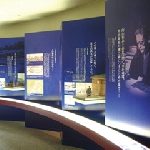
Tokuda Shuusei (1872 – 1943) was a novelist who is said to be one of the “Three Great Writers in Kanazawa,” and was active in the Meiji period (1868 – 1912), the Taisho period (1912 – 1926), and the Showa period (1926 – 1989). He was a master of naturalistic literature. – Shusei is a writer who is good at drawing women.
He described the image of the common people, by focusing on the way women live. His work is characterized by a high degree of skill which was praised as a “master of novels”, and a style closely related to the lives of the common people, which never forgets the gaze at the weaker.
This museum introduces his life and achievements and traces the origin of the warm gaze.
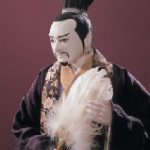
The Wakisaka family, the former lord of Awaji Sumoto Domain, became a lord of Iida Domain later. Iida has the history of the puppet theater, handed down by Myojin-ko, the fraternal religious association, which learned puppet skills from Awajishima Island in Hyogo and puppet operations in Joruri, a Japanese ballad drama with shamisen, three-stringed Japanese lute, from Osaka.
This museum was opened with puppets donated by puppet artist, Kawamoto Kihachiro (1925 – 2010). This museum exhibits puppets that appeared in the NHK TV Drama, “The Tale of the Heike”, narrative poetry of the struggle between the Taira clan and Minamoto clan for control of Japan at the end of the 12th century, and “Sangokushi”, a romance of the Three Kingdoms in the 2nd -3rd centuries in China, which consists of history, legend and myth.
You can understand that those expressive faces of puppets had been calculated well.
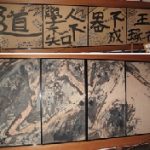
This museum uses the warehouse for raw cotton, of Kurobo Company Ltd., which was founded in 1888. The Ohara family became a leading merchant who operated cotton brokers and rice wholesalers, in Kurashiki Okayama, which was a Tokugawa Shogun demesne in the Edo period (1603 – 1868). Kobori Enshu (1579 – 1647): a feudal lord, and a master of the tea ceremony, was a local magistrate of Kurashiki, who sent a large Hyoromai, provisions of rice for the army, to the Tokugawa Shogunate in the winter campaign of the siege of Osaka in 1614.
The Ohara family moved into the spinning industry during the modernization of the Meiji period (1868 – 1912). Later, they developed an educational and social business with the establishment of hospitals, schools, and art museums. The calligraphy drawn on sliding doors for employee education in this site, by Munakata Shiko (1903 – 1975): a Japanese woodblock printmaker, is exhibited.

This museum, located in Matsuyamajo Castle Horinouchi Park, collects works of Claude Monet (1840 – 1926), the French impressionist painter, and Pierre Bonnard (1867 – 1947) a French post-impressionist painter, and works of Yasuda Yukihiko (1884 – 1978), a Japanese-style historical painter and a representative of modern Japan.
The museum also introduces Sugiura Hisui (1876 – 1965), a pioneering Japanese graphic designer. Hisui studied with the Shijo school of Japanese painting, with the aim of becoming a Japanese style painter. He received guidance on painting and graphic design from Western painter Kuroda Seiki (1866 – 1924) a Japanese painter and a leader of the Western-style painting movement at the Tokyo School of Fine Art, who became a graphic designer.
Hisui’s works convey a sense of innocence, through the design of Art nouveau.
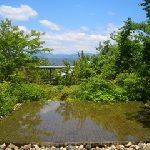
This garden was opened in 1958 to honor the achievements of Doctor Makino Tomitaro (1862 – 1957), a Japanese botanist called “Father of Japanese Botany.”
He was from Kochi Prefecture. The memorial hall opened in 1999, introducing plant illustrations by Doctor Makino. In the 8 ha. garden, you can enjoy over 3,000 species each season, including plants from Southwest Japan and plants investigated to Doctor Makino.
The restaurant and the cafe are surrounded by greenery, and the shop, full of original items, is highly recommended.
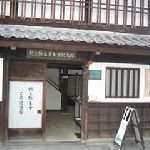
Nogami Yaeko (1885 – 1985), a Japanese author, was born here in 1885. She sought women’s independence, while cooperating with Seito, the Blue Stocking Journal, a literary magazine, created in 1911, to promote the equal rights of women through literature and education.
This museum preserves her real oral words along with about 200 handwritten manuscripts and relics of her teenage years. In September 1978, she was selected as the No. 1 Honorary Citizen of Usuki City and was active in writing until 99 years old.
And “The Alps Girl in the Mountains” by Johanna Spyri, a Swiss author in 1881, was the first translated by Yaeko, which is now famous as “Heidi, Girl of the Alps”. The Japanese Anime TV series of Hidi, Girl of the Alps is a based on the novel by Johanna Spyri, which was so popular in Japan, too.
Yaeko is a women and author who lived by her own philosophy.

This museum exhibits the materials related to China and Portugal, associated with Nagasaki, excavated archaeological materials, and the cultural materials of Dejima, a Dutch trading post located in Nagasaki, from 1641 to 1854. This museum introduces the history of Nagasaki, which developed as the only gateway to foreign countries in the Edo period (1603 – 1868).
This museum introduces the depth of Nagasaki taste, through food culture such as Shipoku Ryori, Japanese-Chinese cuisine, which is the cuisine of Ozashiki, withdrawing room, formal cuisine in Nagasaki, and dolls loved by children and adults.
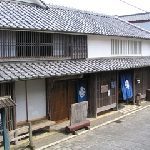
Mimitsu became the commercial port of Takanabe Domain in the Edo period (1603 – 1868) in the early modern times. Sengoku Bune, a large junk boat with capacity for 1,000 koku, a unit of volume of rice, arrived in Mimitsu, loaded with wood transported through the Mimikawa River, and headed to Osaka.
A number of houses and stores of shipping agencies and traders lined up, until the Meiji Restoration, an event that sectored practical imperial rule of the Empire of Japan in 1868 under Emperor Meiji.
This museum is the house of former Kawachiya, shipping agency and trader, which has wide frontage, Kyogoshi, a thinner lattice of Kyoto townhouses, and white walls, and can overlook the port of Mimitsu from the second floor.
This museum exhibits Funadansu, a chest made for the protection of fragile items in the turbulence of rough seas, and boat furniture, which conveys the prosperity and the atmosphere at that time.
